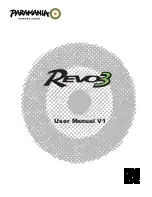
INTRODUCTION
This Flight Manual applies only to the particular aeroplane identified by
registration markings and serial number on page 1 and contains the airworthiness
limitation and essential operating data for that particular aeroplane.
The Flight Manual shall be carried in the aeroplane on all flights. It is the
responsibility of the pilot in command to be familiar with the contents of this Manual and
to comply with all directions contained herein relating to the operation of the aeroplane.
Amendments. It is the owners responsibility to incorporate in this Manual all
amendments, and to enter the date of incorporation and his/her signature on the
Amendment Record Sheet.
DEFINITIONS
The following definitions apply throughout this Manual:
Airfield Pressure Height
The Airfield Pressure Height is that height registered at the surface of an aerodrome by an
altimeter with the pressure sub-scale set to 1013.2 hectapascals.
I.A.S.
Indicated airspeed, which is the reading from an airspeed indicator having no calibration
error.
Take-Off Safety Speed.
The Take-Off Safety Speed is chosen to ensure that adequate control will exist under all
conditions, including turbulence and sudden and complete engine failure, during the climb
after take-off.
Approach Speed
The approach speed is a speed chosen to ensure that adequate control will exist under all
conditions, including turbulence, to carry out a normal flare and touchdown.
Normal operating Limit Speed (Maximum Structural Cruising Speed)
This speed shall not normally be exceeded. Operations above the Normal Operating Limit
Speed shall be conducted with caution and only in smooth air.
Manoeuvring Speed.
Maximum for manoeuvering involving an approach to the stall conditions or full
application of the primary flight controls.
Pilot’s Operating Handbook
Piel Emeraude CP301 VH-SJH
Chapter 1
Description
Chapter 2
Leading Particulars
Chapter 3
Aircraft Systems And Equipment
1 Electrical System
2 Fuel System
3 Oil System
4 Engine Controls
5 Aircraft Controls
6 General Equipment (including Radio)
Chapter 4
Limitations
1 Design Limitations
2 Engine Limitations
3 Flying Limitations
4 Weight and Centre of Gravity Limitations
5 Load Schedule
Chapter 5
Handling
1 Pre-flight Inspection
2 Cockpit Check Before Starting
3 Starting
4 After Starting
5 Taxiing – Use of Brakes
6 Before Take-off
7 Take-off
8 Climbing
9 General Flying
10
Cruising
11
Mixture
Control

































